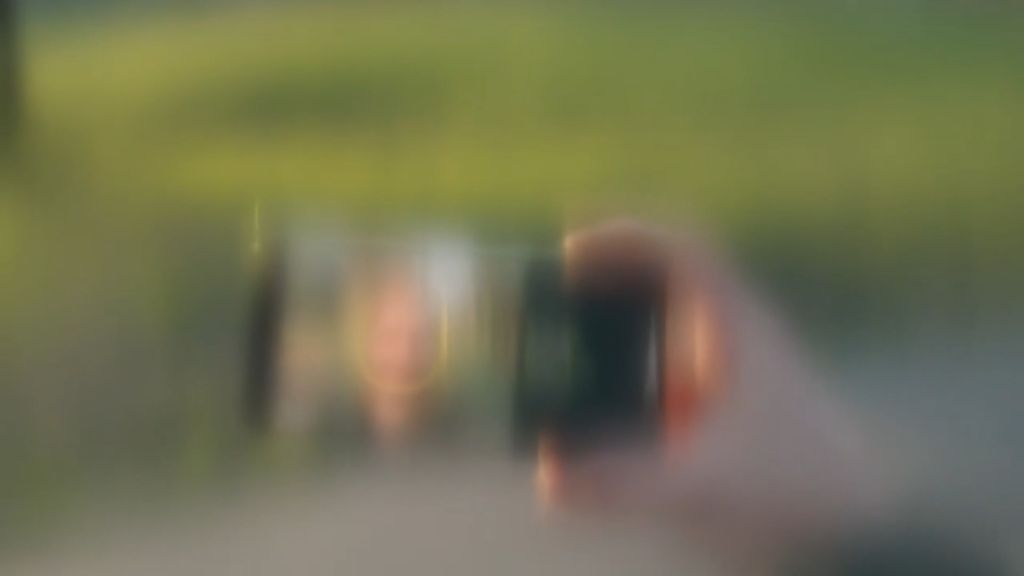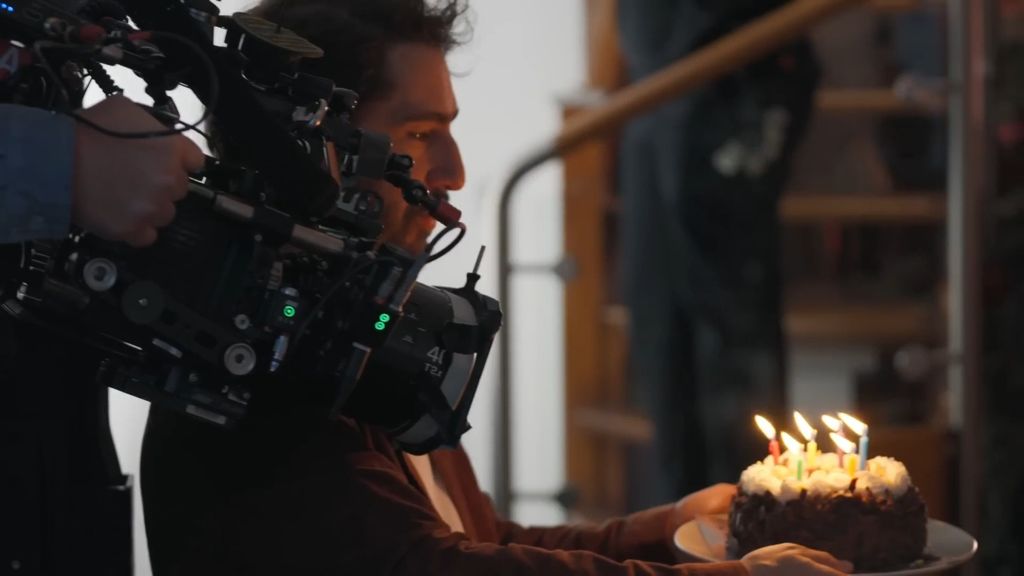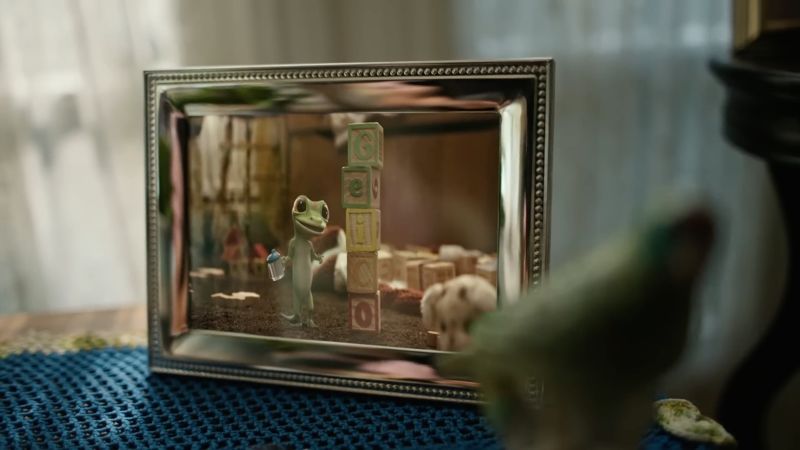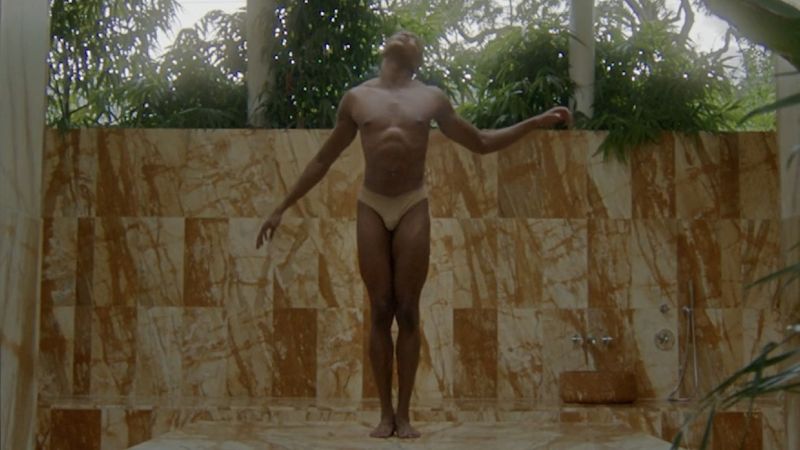How Adam Morse brought his Super Bowl vision to life
Employing authentic storytelling and innovative in-camera techniques, the director's debut Big Game spot offers a first-person perspective of Javier, a visually-impaired protagonist, as he captures moving moments through the lens of his Google phone, seamlessly showcasing its guided frame feature. shots caught up with the director to find out more.
What was the brief like from Google for this spot and how much creative freedom did you have?
The brief from Google was to translate a blind point of view with as much authenticity as possible. They made the creative process extremely collaborative and gave me a lot of artist freedom to express the blind perspective and technically execute this POV in the way I felt was strongest.
We applied petroleum jelly on the glass of the lens, used a diopter filter and shot soft focus.
Credits
powered by
- Agency GUT/Miami
- Production Company SMUGGLER
- Director Adam Morse
-
-
Unlock full credits and more with a Source + shots membership.
Credits
powered by
- Agency GUT/Miami
- Production Company SMUGGLER
- Director Adam Morse
- Managing Director Sue Yeon Ahn
- Executive Producer Patrick Milling-Smith
- Executive Producer Brian Carmody
- Executive Producer Allison Kunzman
- Head of Production Alex Hughes
- Concept Production Landia/USA
- Editing Google Creative Lab/New York
- Post Production/VFX Preymaker
- VFX Chief Creative Officer Angus Kneale
- Executive VFX Producer Verity Grantham
- Executive VFX Producer Melanie Wickham
- VFX Producer Luis Martin
- VFX Artist Ruben Vandebroek
- VFX Producer Jacob Weeks
- VFX Creative/VFX Supervisor Edward Lopez Jr
- VFX Supervisor Jay Bandlish
- Color Company 3/New York
- Color Producer Ryan Moncrief
- Colorist Tim Masick
- Music/Sound Design Q Department
- Audio Post Heard City
- Managing Audio Partner Gloria Pitagorsky
- Executive Audio Producer Liana Rosenberg
- Senior Audio Producer B Munoz
- Senior Audio Producer Nick Duvarney
- Head of Audio Production Jackie James
- Assistant Audio Producer Dylan Stetson
- Audio Mixer Philip Loeb
- Assistant Audio Mixer Oddy Litlabo
- Assistant Audio Mixer Zoltan Monori
- Assistant Audio Mixer Chenoa Tarin
- Assistant Audio Mixer Virginia Wright
- Editorial Union Editorial
- Editor Karen Kourtessis
- Assistant Editor Colin Davis
- Assistant Editor Nico Gilmore
- Managing Director Caryn MacLean
- Executive Producer Melissa Lubin
- Head of Production Lily Hartmann
- Creative Armando Samuels
- Global HP Kate Morrison
- Co-Founder/Creative Chairman Anselmo Ramos
- Partner/Chief Creative Officer North America Ricardo Casal
- Executive Creative Director Josh Rosen
- Executive Creative Director Kevin Proudfoot
- Creative Director Jose Ramirez
- Creative Director Andy Tamayo
- Senior Creative Director Kellan Davidson
- Creative Director Jeffrey Schermer
- Design Lead Donica Ida
- Creative Director Alexander Allen
- Executive Producer Lydia Holness
- Producer Nick Fewtrell
- Senior Producer Niki Polyocan
- Associate Creative Director Daniel Jaramillo
- Associate Creative Director Sofia Rosell
- Director's Liason Julia Varvara
- Senior Producer Greg O'Connell
- Producer Allison Raich
- Executive Producer Denisse Ramirez Rios
- HP Renata Neumann
- DP James Laxton
- Production Designer Marcus Rowland
- Partner/Chief Creative Officer North America Juan Javier Pena Plaza
- Executive Creative Director Danny Alvarez
- Producer Stephanie Schmalbach
- VO Stevie Wonder

Credits
powered by
- Agency GUT/Miami
- Production Company SMUGGLER
- Director Adam Morse
- Managing Director Sue Yeon Ahn
- Executive Producer Patrick Milling-Smith
- Executive Producer Brian Carmody
- Executive Producer Allison Kunzman
- Head of Production Alex Hughes
- Concept Production Landia/USA
- Editing Google Creative Lab/New York
- Post Production/VFX Preymaker
- VFX Chief Creative Officer Angus Kneale
- Executive VFX Producer Verity Grantham
- Executive VFX Producer Melanie Wickham
- VFX Producer Luis Martin
- VFX Artist Ruben Vandebroek
- VFX Producer Jacob Weeks
- VFX Creative/VFX Supervisor Edward Lopez Jr
- VFX Supervisor Jay Bandlish
- Color Company 3/New York
- Color Producer Ryan Moncrief
- Colorist Tim Masick
- Music/Sound Design Q Department
- Audio Post Heard City
- Managing Audio Partner Gloria Pitagorsky
- Executive Audio Producer Liana Rosenberg
- Senior Audio Producer B Munoz
- Senior Audio Producer Nick Duvarney
- Head of Audio Production Jackie James
- Assistant Audio Producer Dylan Stetson
- Audio Mixer Philip Loeb
- Assistant Audio Mixer Oddy Litlabo
- Assistant Audio Mixer Zoltan Monori
- Assistant Audio Mixer Chenoa Tarin
- Assistant Audio Mixer Virginia Wright
- Editorial Union Editorial
- Editor Karen Kourtessis
- Assistant Editor Colin Davis
- Assistant Editor Nico Gilmore
- Managing Director Caryn MacLean
- Executive Producer Melissa Lubin
- Head of Production Lily Hartmann
- Creative Armando Samuels
- Global HP Kate Morrison
- Co-Founder/Creative Chairman Anselmo Ramos
- Partner/Chief Creative Officer North America Ricardo Casal
- Executive Creative Director Josh Rosen
- Executive Creative Director Kevin Proudfoot
- Creative Director Jose Ramirez
- Creative Director Andy Tamayo
- Senior Creative Director Kellan Davidson
- Creative Director Jeffrey Schermer
- Design Lead Donica Ida
- Creative Director Alexander Allen
- Executive Producer Lydia Holness
- Producer Nick Fewtrell
- Senior Producer Niki Polyocan
- Associate Creative Director Daniel Jaramillo
- Associate Creative Director Sofia Rosell
- Director's Liason Julia Varvara
- Senior Producer Greg O'Connell
- Producer Allison Raich
- Executive Producer Denisse Ramirez Rios
- HP Renata Neumann
- DP James Laxton
- Production Designer Marcus Rowland
- Partner/Chief Creative Officer North America Juan Javier Pena Plaza
- Executive Creative Director Danny Alvarez
- Producer Stephanie Schmalbach
- VO Stevie Wonder
What was your creative process like on set? Were there any tools or techniques that particularly helped you bring your ideas to life?
I used a combination of three elements to create the blind effect on screen. We applied petroleum jelly on the glass of the lens, used a diopter filter and shot soft focus. These 3 elements in combination created a very organic and real feeling for us, after we tested the effects and saw it on screen for the first time.
Working with blind talent is not very different from directing sighted talent, they are still memorising the same lines and choreography and I’m still using the same process to guide their performances.
Why did you decide to use lenses to create this effect in camera, rather than having it edited in post production?
It was essential for me that there was a real, practical, in-camera approach to how we created the blind perspective because this is the best way to evoke a visceral response from the viewer.
Credits
powered by
- Agency GUT/Miami
- Production Company SMUGGLER
- Director Adam Morse
-
-
Unlock full credits and more with a Source + shots membership.
Credits
powered by
- Agency GUT/Miami
- Production Company SMUGGLER
- Director Adam Morse
- Managing Director Sue Yeon Ahn
- Executive Producer Patrick Milling-Smith
- Executive Producer Brian Carmody
- Executive Producer Allison Kunzman
- Head of Production Alex Hughes
- Concept Production Landia/USA
- Editing Union Editorial
- Post Managing Director Caryn MacLean
- Executive Post Producer Melissa Lubin
- Head of Post Production Lily Hartmann
- Editor Karen Kourtessis
- Assistant Editor Nico Gilmore
- Assistant Editor Colin Davis
- Post Production/VFX Preymaker
- VFX Chief Creative Officer Angus Kneale
- Executive VFX Producer Verity Grantham
- Executive VFX Producer Melanie Wickham
- VFX Producer Luis Martin
- VFX Artist Ruben Vandebroek
- VFX Producer Jacob Weeks
- VFX Creative/VFX Supervisor Edward Lopez Jr
- VFX Supervisor Jay Bandlish
- Color Company 3/New York
- Color Producer Ryan Moncrief
- Managing Audio Partner Gloria Pitagorsky
- Colorist Tim Masick
- Music Animal Music/USA
- Music Producer Alberto Farinas
- Sound Designer/Audio Mixer Sam Merkin
- Audio Post Heard City
- Executive Audio Producer Liana Rosenberg
- Senior Audio Producer B Munoz
- Senior Audio Producer Nick Duvarney
- Head of Audio Production Jackie James
- Assistant Audio Producer Dylan Stetson
- Audio Mixer Daniel Irizarry
- Audio Mixer Jeremy Siegel
- Assistant Audio Mixer Oddy Litlabo
- Assistant Audio Mixer Zoltan Monori
- Assistant Audio Mixer Chenoa Tarin
- Assistant Audio Mixer Virginia Wright
- Creative Armando Samuels
- Global HP Kate Morrison
- Co-Founder/Creative Chairman Anselmo Ramos
- Partner/Chief Creative Officer North America Ricardo Casal
- Executive Creative Director Josh Rosen
- Executive Creative Director Kevin Proudfoot
- Creative Director Jose Ramirez
- Creative Director Andy Tamayo
- Senior Creative Director Kellan Davidson
- Creative Director Jeffrey Schermer
- Design Lead Donica Ida
- Creative Director Alexander Allen
- Executive Producer Lydia Holness
- Producer Nick Fewtrell
- Senior Producer Niki Polyocan
- Associate Creative Director Daniel Jaramillo
- Associate Creative Director Sofia Rosell
- Director's Liason Julia Varvara
- Senior Producer Greg O'Connell
- Producer Allison Raich
- Executive Producer Denisse Ramirez Rios
- HP Renata Neumann
- DP James Laxton
- Production Designer Marcus Rowland
- Partner/Chief Creative Officer North America Juan Javier Pena Plaza
- Executive Creative Director Danny Alvarez
- Producer Stephanie Schmalbach
- Composer Raphaelle Thibaut

Credits
powered by
- Agency GUT/Miami
- Production Company SMUGGLER
- Director Adam Morse
- Managing Director Sue Yeon Ahn
- Executive Producer Patrick Milling-Smith
- Executive Producer Brian Carmody
- Executive Producer Allison Kunzman
- Head of Production Alex Hughes
- Concept Production Landia/USA
- Editing Union Editorial
- Post Managing Director Caryn MacLean
- Executive Post Producer Melissa Lubin
- Head of Post Production Lily Hartmann
- Editor Karen Kourtessis
- Assistant Editor Nico Gilmore
- Assistant Editor Colin Davis
- Post Production/VFX Preymaker
- VFX Chief Creative Officer Angus Kneale
- Executive VFX Producer Verity Grantham
- Executive VFX Producer Melanie Wickham
- VFX Producer Luis Martin
- VFX Artist Ruben Vandebroek
- VFX Producer Jacob Weeks
- VFX Creative/VFX Supervisor Edward Lopez Jr
- VFX Supervisor Jay Bandlish
- Color Company 3/New York
- Color Producer Ryan Moncrief
- Managing Audio Partner Gloria Pitagorsky
- Colorist Tim Masick
- Music Animal Music/USA
- Music Producer Alberto Farinas
- Sound Designer/Audio Mixer Sam Merkin
- Audio Post Heard City
- Executive Audio Producer Liana Rosenberg
- Senior Audio Producer B Munoz
- Senior Audio Producer Nick Duvarney
- Head of Audio Production Jackie James
- Assistant Audio Producer Dylan Stetson
- Audio Mixer Daniel Irizarry
- Audio Mixer Jeremy Siegel
- Assistant Audio Mixer Oddy Litlabo
- Assistant Audio Mixer Zoltan Monori
- Assistant Audio Mixer Chenoa Tarin
- Assistant Audio Mixer Virginia Wright
- Creative Armando Samuels
- Global HP Kate Morrison
- Co-Founder/Creative Chairman Anselmo Ramos
- Partner/Chief Creative Officer North America Ricardo Casal
- Executive Creative Director Josh Rosen
- Executive Creative Director Kevin Proudfoot
- Creative Director Jose Ramirez
- Creative Director Andy Tamayo
- Senior Creative Director Kellan Davidson
- Creative Director Jeffrey Schermer
- Design Lead Donica Ida
- Creative Director Alexander Allen
- Executive Producer Lydia Holness
- Producer Nick Fewtrell
- Senior Producer Niki Polyocan
- Associate Creative Director Daniel Jaramillo
- Associate Creative Director Sofia Rosell
- Director's Liason Julia Varvara
- Senior Producer Greg O'Connell
- Producer Allison Raich
- Executive Producer Denisse Ramirez Rios
- HP Renata Neumann
- DP James Laxton
- Production Designer Marcus Rowland
- Partner/Chief Creative Officer North America Juan Javier Pena Plaza
- Executive Creative Director Danny Alvarez
- Producer Stephanie Schmalbach
- Composer Raphaelle Thibaut
The spot achieves a perfect balance of telling a heartfelt story whilst practically demonstrating the Google Pixel’s accessibility functions, how did you achieve this?
Our intention was always to tell a character driven story, full of emotion and have the product be a key supporting character in the spot. The Pixel being the biggest ally to our hero in our film. Taking a narrative approach for the making of this commercial was very natural to me, as this is my background as a filmmaker. The functionality of the guided frame feature and the heartfelt approach to the narrative go hand in hand with how we wanted to tell the story.
The innovation of the technology is empowering and I believe it will encourage the next generation of blind artists.
Do you think advancements in technology, such as the Google Pixel’s accessibility functions, will encourage an increase in differently-abled directors in the near future?
Absolutely. The innovation of the technology is empowering and I believe it will encourage the next generation of blind artists to have the confidence and ability to go out and create their own work.
This was a brilliant opportunity to explain how blindness is a complicated spectrum and not every sight impaired person signals they are disabled with a walking stick or guide dog.
Are there any differences in the casting and shooting process when working with a blind actor?
No there aren’t. Working with blind talent is not very different from directing sighted talent, they are still memorising the same lines and choreography and I’m still using the same process to guide their performances.
What were the highlights of your first Super Bowl spot?
The entire experience of making this was one big highlight and every day was incredibly exciting and we had such an excellent team collaborating on this.
The functionality of the guided frame feature and the heartfelt approach to the narrative go hand in hand.
This was a brilliant opportunity to explain how blindness is a complicated spectrum and not every sight impaired person signals they are disabled with a walking stick or guide dog.
)











